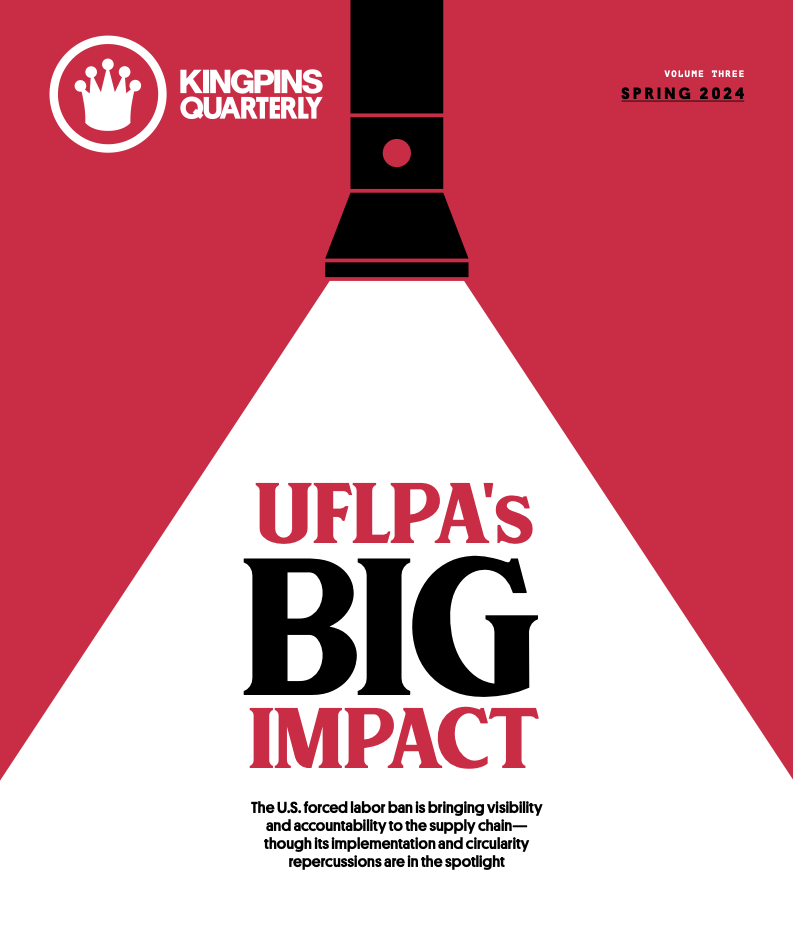There are no absolutes in sourcing. The factors that prompt denim brands to opt for production partners in one country today could lose significance in a decade, a year or even a season. We’re seeing it now as the geopolitical climate becomes dicier by the day. Suddenly stability is king, leapfrogging over other long held priorities. Even nearshoring, which has spent nearly a decade on everyone’s lips, is moving up the agenda. And as sourcing considerations shuffle, the industry is working to determine where labor costs fit into the hierarchy.
“Minimum wages are a decision criteria. But maybe not necessarily critical. I think we have more critical factors to take into consideration like geopolitics, which I think is currently a major criteria,” said Guido Schlossmann, president and Group CEO of virtual manufacturer Synergies Worldwide Sourcing, listing duty rates, efficiency and proximity as other key factors. “We have actually a variety of very critical decision-making factors, and it becomes more and more difficult to put them into a meaningful sequence or order.”
Henry Chow, founder and CEO of Hong Kong- based Precision Textiles, echoes that sentiment. He said for his firm, which produces in Vietnam for the Australian market, proximity is a bigger concern than wages.
“When you look at the minimum wage and you look at what that percentage is in the total retail price, then it becomes—it doesn’t become insignificant—but its significance really is very, very small,” Chow said. “Speed to market, making the right decisions on product and being able to do that with having the flexibility of having your supply chain closer to you and being able to react faster to market is a far bigger factor in the decision making.”

Wages are Up But What Does That Mean?
The promise of cheap labor has been a siren song for apparel firms since production moved offshore. But labor isn’t cheap anymore—even in many so-called low-cost countries. Minimum wages are increasing around the globe. In 2023, the minimum wage in Pakistan increased 28 percent year on year, Mexico was up 20 percent and Egypt 11 percent during the same period. While other countries like Vietnam and China were flat, Turkey was an outlier with a minimum wage increase of 107 percent.
The potential for this exact scenario has kept many a sourcing executive awake at night. But these days, rising minimum wages isn’t sending the shockwave through the denim ecosystem that it might have in years past. Today, factors like tumbling currencies abroad and waning demand at home are mitigating at least a portion of the price increases brand partners would otherwise be paying for goods.
As of November 2023, the currencies for all of the countries Kingpins Quarterly tracked—with the exception of Mexico’s—weakened against the dollar. So, for example, the 28 percent increase in minimum wages in Pakistan was mitigated by a 17 percent drop in the value of the rupee. Take Egypt, which has seen minimum wages increase five times since 2020. On its own, that fact would scare any sourcing executive away, but Marco Vonrufs, general manager of Intertex, which owns a vertical production facility in Egypt, said the country’s retail partners are still winners. “It looks like a really dramatic situation. But in fact, if we consider that the Egyptian pound was E£ 7.8 for $1 in 2012 and today it’s E£ 33 for $1, all the companies which work for the export and cash their invoices in Euro or in dollars, basically, they neutralized all this increase,” he said.
Beyond currency devaluation, the sluggish market for denim often also results in a greater disparity between product cost and price, as factories jockey for the few orders up for grabs. “We are talking about cost, but price is a totally different equation,” Schlossmann said. “In times of declining consumption, in times of unutilized production capacity, prices can be given which are far lower than any cost you may calculate.”
Using Bangladesh as an example, Schlossmann said the requested 187 percent minimum wage increase would increase the FOB price on a pair of jeans by 65 percent, assuming labor accounts for 35 percent of the FOB price. This would obviously be substantial but for the last decade prices out of Bangladesh have actually been stagnant, he said, in part due to currency depreciation and one other factor. “People are desperate to fill their production capacity, especially factories which are highly bank leveraged… So, you see a substantial discrepancy between price and cost, which is very tough, because eventually it goes fully into the manufacturers’ margin.”
But for now, suppliers that can do so are taking whatever business they can get—at whatever price—and it ratchets up the competition between countries, Vonrufs said. Weak sales from the U.S., has resulted in fewer orders for Egypt because producers there can’t meet the prices quoted elsewhere. “Since America reduced the volume, suddenly [Bangladesh] produces at very, very low prices,” he said. “We lost many orders where [brands and retailers] put us in competition with Bangladesh with a huge difference of price. They gave us target prices, which are crazy; 20 percent less compared to last year, which cannot be achieved. We have a profitability of 6, 7, 8 percent maximum.”

Why Wages Matter But Not That Much
Even when wage hikes result in larger invoices for brands and retailers, sourcing managers must weigh these increases against other equally weigh these increases against other equally important factors before considering moving production.
When you look at wages in the context of productivity and efficiency, the conversation gets very complicated, especially for the denim market. “When we talk about wages, it contributes on average, around 16 percent of the product’s cost. It’s somewhere between 10 to 16 percent, depending upon the complexity of the product and the material side,” said Zaki Saleemi, a 23-year veteran of sourcing in Asia and senior vice president of global sales for Material Exchange. “Even if you go to a cheap place, like Ethiopia you’re gonna have very high rejection rates. And so that’s another thing people can overlook, which is the real efficiency level,” he said, adding if China is considered 100 percent efficient, Pakistan is around 72 percent and Bangladesh is at 56 percent.
Schlossmann said sourcing executives need to be present on the ground to understand these nuances. “In denim, you have a lot of automization so the level of technical advancement gives you more efficiency. You’ll find it in China, you’ll find this in Mexico, you’ll find this in Turkey. You’ll find technology-driven efficiency, especially in high wage countries. They have implemented it already in order to stay relevant and competitive,” he said. “And then you have to compare it against countries like Bangladesh, which work with less technology efficiency, but the same efficiency when it comes to skills.”
Automation has allowed Intertex to slash its workforce from 2,500 to 1,200 employees over the last six years. While the company used to be hesitant about investing in technology, it was spurred on by the idea of minimizing headcount, thereby reducing labor-related headaches. “Nowadays when we make an investment, of course, we think about also the savings in terms of the number of employees—not that much for the cost of the employees—but [because of] the difficulty to manage so many people in a factory,” Vonrufs said.
After 25 years of producing denim solely in China, Precision Textiles, which launched in 1992, began moving production to Vietnam. While the company found cheaper labor, costs didn’t really decrease. “Price wise, the competitive advantage from Vietnam to China isn’t that great when you take into account all the factors that go into making a pair of jeans,” Chow said. “In Vietnam, we found that efficiencies were at least 30 percent lower at the factory floor than what we could achieve in China, and so that offset the actual labor cost advantage where labor costs might have been a third of what they were in China.”
Even without the efficiency drawbacks, Chow said wages alone wouldn’t be enough to warrant country hopping since he estimates that they only constitute about 10 percent of the FOB price for jeans. “So, if you’re saving 20 percent on 10 percent, it’s only a couple of percent in the context of FOB pricing. The volumes [in the Australian market] don’t justify making such a huge move,” he said.
Ultimately, it was the negative geopolitical undercurrent around China that prompted the company to begin to shift production to Vietnam. And given the state of the world, many sourcing destinations are seeing their fates rise and fall as mitigating risk becomes task #1 for sourcing managers. Myanmar saw an influx of production thanks to cheap labor and investments from other Asian countries, but the apparel industry made an about-face when workers’ rights issues hit the press. Similarly, human rights violations and a civil war saw Ethiopia, which was a promising low-cost option, stripped of its duty-free status under the U.S. African Growth Opportunity Act, making the African nation less appealing.
From a geopolitical standpoint, Egypt has been both in and out of favor, according to Vonrufs. “When we started, we were one of the first really to be in Egypt; we were there since 1998. The people say no Mubarak. This is not an issue anymore. On the contrary, I would say everybody is appreciating the political stability of Egypt, and I think this is a winning factor, especially in this moment,” he said. “America was always there in the past because Egypt used to work mainly for the mass production in America, but also it’s becoming quite popular in Europe, which mostly never approached Egypt in the last 10 years.”
Vonrufs’ experience underscores Chow’s perspective on wages: basically, they’re important but less so than anything related to geopolitics and enabling retailers to make smaller bets going forward. “The main factor that’s going to [determine] where people are shifting their supply chains is agility, flexibility, speed to market,” he said, “so that people are having to hold less inventory and not having to look out into the crystal ball so far out.”
“Calculating the Cost of Labor” ran in the Winter 2024 issue of Kingpins Quarterly. Read the issue here.




